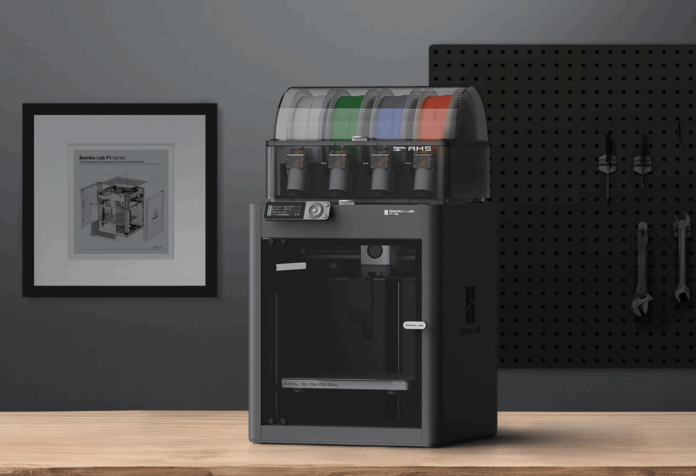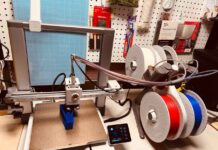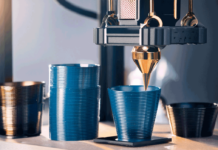
From medical advancements to sustainable manufacturing, cutting-edge 3D printing technologies are transforming the future
In recent years, 3D printing has evolved from a niche technology into a powerful tool driving innovation across industries. From healthcare to aerospace, the latest advancements in 3D printing are pushing the boundaries of what’s possible.
These innovations are not just making waves in industrial applications but are also opening doors for personalized solutions in homes, small businesses, and schools.
We are seeing the evolution of 3D printing move at a rate not seen before. The idea of taking an idea to product in minutes is now a reality.
But what exactly are these groundbreaking changes, and why are they so important? Let’s explore some of the latest 3D printing innovations and their growing significance.
1. Multi-Material and Full-Color 3D Printing
One of the most exciting developments in 3D printing is the ability to print with multiple materials and full-color precision in a single process. Previously, 3D printers were limited to working with a single material, usually plastic or resin.
Today, companies like Bambu Labs with their A-1 and A-1 Mini printers have changed the game to bring the world of multi-colour printing right to the desktops of home DIY crafters and for more serious users.
However, today’s advanced machines can combine materials with different properties—rigid, flexible, heat-resistant, or even conductive. This development is vital for industries like automotive and aerospace, where complex parts with varying properties can now be manufactured in a single print, reducing both cost and production time.
In addition to material versatility, full-color printing has improved dramatically. Companies like Stratasys and HP have introduced printers that can produce intricate, multicolored designs, which are being used for prototyping in industries like fashion, architecture, and consumer goods.
2. Metal 3D Printing: The Future of Manufacturing
Another major leap is in metal 3D printing, also known as additive manufacturing. While plastic-based 3D printing has been common for years, the ability to print with metals such as steel, titanium, and aluminum is opening up new possibilities in heavy industries. Metal 3D printing allows for the creation of intricate, high-strength components that were previously impossible or expensive to produce with traditional manufacturing methods.
This advancement is particularly important for industries like aerospace and defense, where lightweight, durable parts are essential. For example, Boeing and Airbus are using metal 3D printing to create critical parts for aircraft, improving fuel efficiency and reducing material waste.
3. Bioprinting: A Breakthrough in Healthcare
Perhaps one of the most life-changing innovations in 3D printing is the development of bioprinting—using specialized printers to create human tissues, organs, and even blood vessels. Scientists have successfully printed skin grafts for burn victims and are working toward printing fully functional organs like kidneys or livers.
This innovation has the potential to eliminate long waiting lists for organ transplants, saving countless lives. In the meantime, 3D-printed tissues are already being used in drug testing, offering a more accurate and ethical alternative to animal testing.
4. Sustainable 3D Printing with Recycled and Biomaterials
Sustainability has become a focal point in manufacturing, and 3D printing is stepping up to the challenge. Newer 3D printers are being developed to use recycled materials, biodegradable plastics, and even organic compounds. Companies like Filabot are pioneering the use of recycled plastic waste in 3D printers, while others are experimenting with materials like algae-based polymers.
These innovations not only reduce the environmental impact of 3D printing but also open up possibilities for sustainable, on-demand manufacturing. As industries focus on reducing their carbon footprints, the ability to create products with minimal waste makes 3D printing an increasingly attractive solution.
5. Mass Customization and On-Demand Manufacturing
One of the most significant impacts of 3D printing is the potential for mass customization. Traditional manufacturing methods are great for producing large quantities of identical products, but customization often comes with added time and cost. With 3D printing, companies can produce customized products quickly and efficiently, whether it’s tailor-made prosthetics for patients or personalized consumer goods like shoes and eyewear.
On-demand manufacturing is also becoming a reality, thanks to 3D printing. Instead of maintaining large inventories of parts, companies can now produce components as needed, reducing storage costs and ensuring faster delivery times. This capability is especially crucial in sectors like automotive and aerospace, where supply chain disruptions can be costly.
Why Are These Innovations So Important?
3D printing innovations are rapidly changing the way products are designed, produced, and delivered. The importance of these new developments lies in their ability to address several key challenges across industries:
- Cost Efficiency: The ability to manufacture complex components in one print and with less material reduces production costs.
- Customization: 3D printing offers unprecedented levels of personalization in industries ranging from healthcare to fashion.
- Sustainability: The use of recycled materials and on-demand production methods means less waste and a smaller environmental footprint.
- Medical Advancements: Bioprinting and personalized medical devices are paving the way for more effective treatments and saving lives.
- Speed and Innovation: Prototyping and production times are slashed, allowing companies to innovate and bring products to market faster than ever before.
The Future of 3D Printing
As 3D printing technology continues to advance, its applications will expand even further. From creating entire homes to printing food, the future possibilities seem endless. With its ability to reduce costs, enhance sustainability, and drive innovation, 3D printing is set to play a crucial role in shaping industries, economies, and even everyday life in the years to come.


